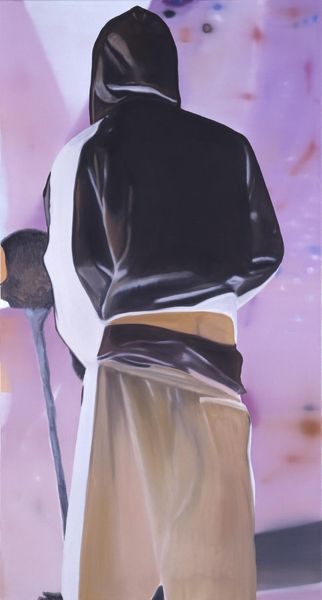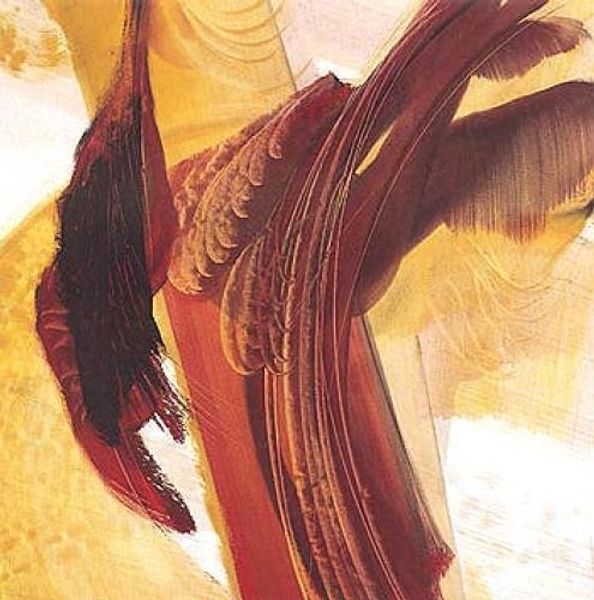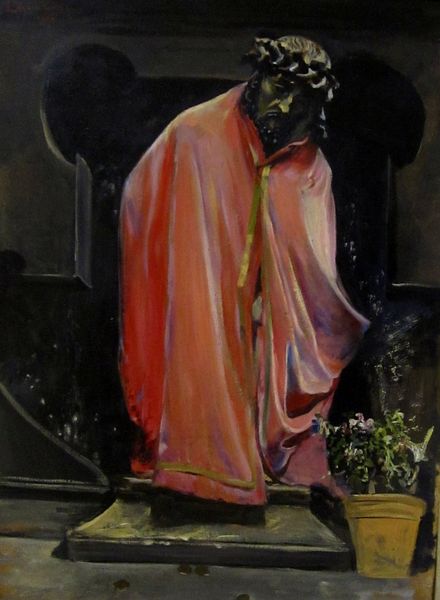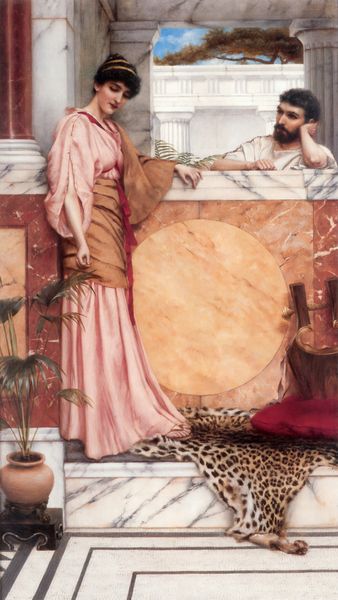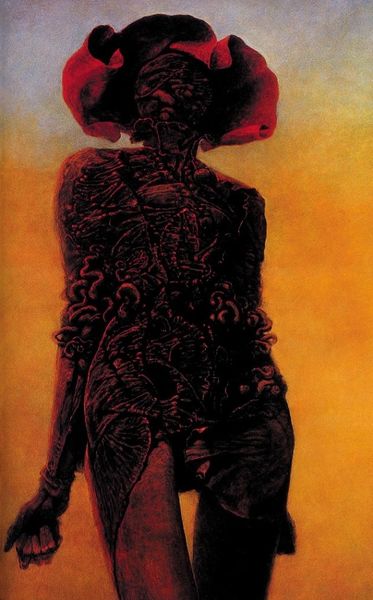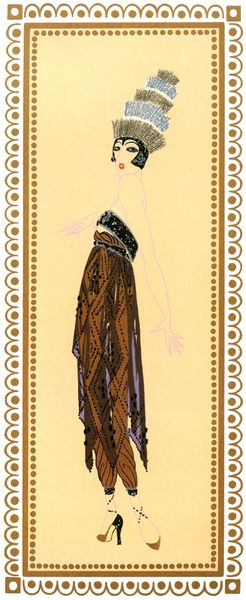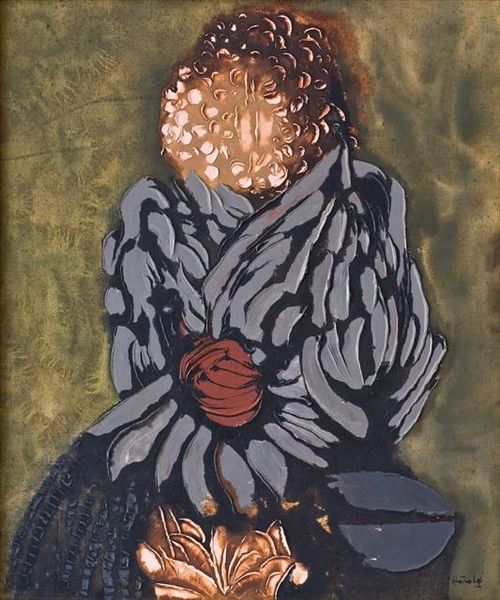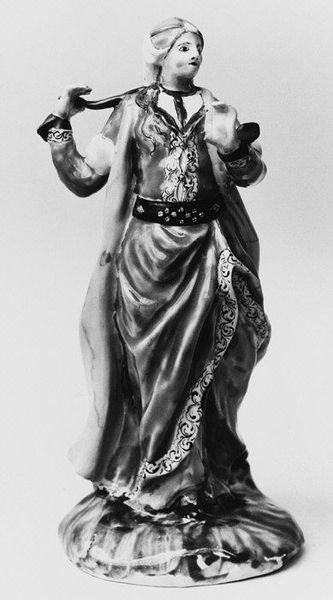
Dimensions: 53.5 x 116.8 cm
Copyright: Public domain
Editor: Here we have James Tissot’s “October,” created in 1878. The woman is dressed impeccably in dark, lavish fabrics surrounded by trees displaying golden foliage; it has a very wistful, serene mood. What stands out to you about this piece? Curator: Immediately, the craftsmanship of the clothing jumps out. Consider the labor involved in creating that ruffled dress, the tailoring of the coat, the fur trim. The materiality of these items speaks to a particular class and their consumption habits. And the leisure implied by being able to stroll through the landscape in such attire. Editor: That’s interesting. I was mostly focused on the woman's expression. Curator: But even her expression is a product of her circumstances. Her leisure, her class… how does the painting’s setting play into this? Editor: It’s a very picturesque landscape. The falling leaves definitely contribute to the title, "October", connecting it to the harvest time. But the woman seems disconnected from any real labor. Curator: Exactly! This "plein-air" painting aestheticizes the season, almost selling the very idea of it as a product, separate from any lived experience. Even the act of painting en plein air suggests a commodification of the natural world. Don’t you think? Editor: I see your point now; there’s this almost…manufactured feel to the ‘natural’ scene through her gaze and social positioning. Curator: Precisely. Thinking about the materiality of the painting itself – oil paint on canvas - is important too. Where did those materials come from, who produced them? It's a network of production that underpins even a seemingly simple scene like this. Editor: I’d never thought about it that way. Focusing on materials reveals a lot more about the artwork and society at the time. Thank you! Curator: It is important to remember that focusing on materials helps reveal a deeper narrative of the artwork.
Comments
No comments
Be the first to comment and join the conversation on the ultimate creative platform.

